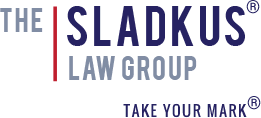Have you received the scam email from China (yet)?
What to do when Your Brand’s Chinese Domain is Registered by a Third Party? What if the brand’s Chinese Twitter account is taken? Are You Aware of China’s Two-Year Domain Name Rule?

If your company has any business ties with China, you are probably familiar with this: domain name scam. By now, pretty much everyone knows it’s a scam – but is there anything we should do more about it other than deleting the email? What exactly are the domain rules in China? And is there anything else a business should do to protect itself?
Common Scenario:
You receive an email from the supposedly “domain name registrar” in China. The email is marked urgent or labeled as a “last reminder”. It notifies you that a third party is trying to register your company’s brand as part of their Chinese domain. It goes like this: suppose the business’ house mark is CHESTER; the core products are clothing. The email warns the business that “someone” is trying to register an infringing domain such as www.chesterlothingchina.cn. Can the sender go ahead and approve the registration?
The purpose of the email is to get the recipient to respond: either to confirm the third party is related (and thereby, allow the domain to become registered) or deny any association (and thereby, inform the “Registrar” to deny the application).
It is not uncommon that you will continue receiving this message even though the first email is supposed to be a “final” reminder. The sender is very persistent.
Most Popular Approach:
Most companies and attorneys know by now to ignore + delete such emails. This is the right approach. However, most companies stop at this point and therefore, a golden opportunity to literally stop a train wreck. My suggestion is to dig a bit deeper. The email serves as a warning signal that your brand is receiving attention, particularly the infringers’ attention, in China. It would make legal as well as economic sense to do something now BEFORE the domain is taken and things start to get very expensive.
A Quick Summary of China’s Domain Name Rule:
Before we discuss the exact steps to “dig deeper”, it is helpful to have a quick understanding of China’s domain rules:
- Background:
Similar to trademark (brand), Chinese domain name is another hot area for infringement. Unfortunately, similar to trademark, once a company’s .CN domain is taken, it is often difficult (and expensive) to get it back. The .CN domains are especially vulnerable to infringement (compared to other Asian country codes such as .HK, .TW) primarily because of China’s booming market and its first-to-file rule.
- Two Year Rule:
If your .CN domain is taken by a third party, it is usually pretty easy (and way less expensive) to get it back if an action is taken in the first two years (counting from the registration date of the infringing domain). The legal name for the action is called a “CNDRP proceeding”. The process takes around two months; the cost is around $2000-5000 (USD, not RMB).
Outside the two-year window, the only legal action available is a court action. As everyone knows, the Chinese courts are not exactly friendly to Western companies nor particularly budget friendly. So, some companies may have no choice but to bargain with the infringer – this is one of the sources of China’s horror stories where Western brands are being extorted in China to get their brands back.
- It’s important to understand the .COM vs. .CN distinction:
- To get back a .COM domain, you can file a typical UDRP action and there’s no time limit.
- To get back a .CN domain, however, business must file a Chinese type of UDRP action (CNDRP) and there’s a two-year time limit.
- Here’s a quick summary about the money part:
- The cost to register a .CN domain is not high at all – around US $300 (all inclusive)
- The cost to get back your Chinese domain in the first 2 years – no more than $4000
- The cost to file a court action to get it back after it’s been registered for 2 years – more than $10K
- The cost to BUY BACK a domain after 2 years – HIGH (some have said $12K is the usual starting point)
So… What Exactly Are The Steps To Dig Deeper to Protect The Brand?
As discussed above, rather than treating this simply and solely as a junk email, consider this a warning sign for more infringement to come. To stop a train wreck (and to minimize the cost exposure), consider the following actions:
- Step #1 – Check and make sure your business has a .CN domain registered
Remember it’s not a matter of “IF” but a matter of “WHEN” your brand will start getting infringed upon in China. In other words, once a business starts to have any type of connection with China (manufacturing or retailing – sometimes just an announcement on the Western media), its brand is immediately vulnerable to infringement. Register the domain now versus later is a choice between spending $300 and getting a peace of mind vis-a-vi budging at least US $10,000 to fight the issue and risking someone else being the brand’s spoke’s person in China. The choice is clear.
- Step #2 – If your key Chinese domain is taken, no worry, be creative.
Assuming a business’ most direct Chinese domain is taken but the infringer is (not yet) actively trying to become the brand’s Chinese website, consider this a good news. The business can simply create another one and start diverting the internet traffic. The goal is to prevent the infringing domain to become the brand’s official China website.
For example, if WWW.CHESTER.CN is taken, think of another one that consumers can easily remember – such as www.chesterclothing.cn; www.chestersportsclothing.cn; www.chesterdress.cn; www.chesterwomen.cn; www.chesterman.cn; www.chesterkids.cn; www. chesterforyou.cn; etc.
However, if your Chinese domain is taken and the infringer is actively trying to become you in China (e.g., they are selling similar style of clothing and accessories under the CHESTER brand), well, give me a call. Depending on the exact scenario, this might be a beginning of a nightmare, or a chance for you to really shine in front of the management team by showcasing your ability to resolve a China issue.
- Step #3 – Are you protected in other key social media accounts in China?
Domain infringement is simply a beginning; typically, a brand will start seeing infringement spreading across key social media in China such as Weibo (China’s version for Twitter), WeChat and others. Make sure the official China account for your brand on these key social media is always YOU, not others.
Other Noteworthy Points:
Frist – do rest assured that 99% of such emails are scam. Reason: the official registrars have enough business; they do not need to work extra hard to solicit more. Also, the fact the email is in English should tip you off – Chinese registrar is notoriously unwilling to communicate in languages other than Mandarin Chinese.
Second –This type of email is similar to an old-fashioned scam Nigeria: they want money. Once you respond, they will either sell you unnecessary domains at a shockingly high price or use fear to extort money. Don’t attempt to reason with the sender what they are doing is wrong – I’ve tried (in both English and Chinese); it accomplishes nothing other than getting my inbox flooded with more scam.
FYI: This type of solicitation is prohibited by the Chinese law. In fact, if you would prefer, you can report the scam to CNNIC.
Bottom Line:
It’s a choice between $300 vs. $12000 – use the email as an opportunity to make sure your brand is protected in China; once the above steps are taken, then it’s now to send the scam email straight to the junk folder.





